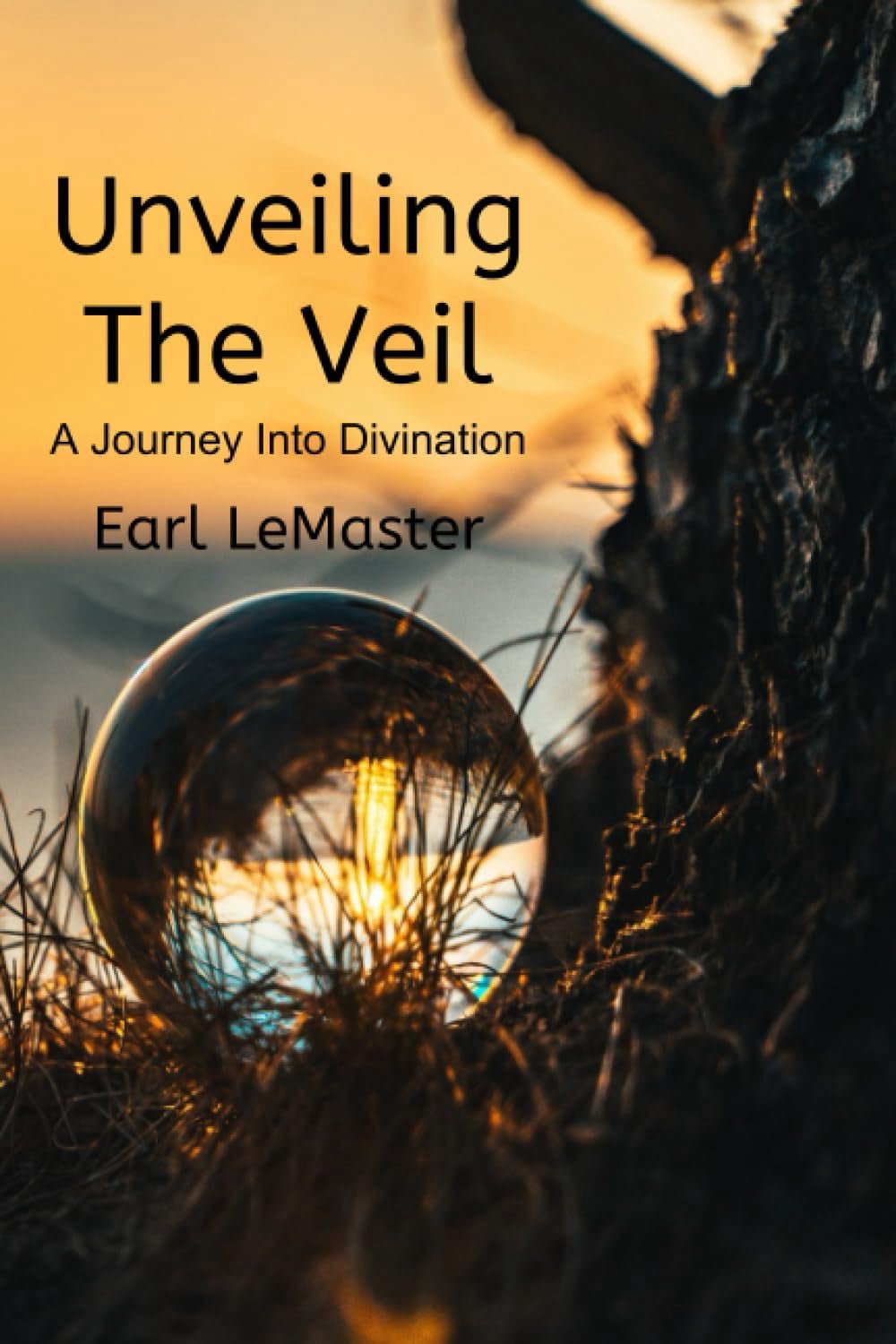Copyright © 1997/98 Benjamin Rowe
Part 1. Preliminary Considerations
(This is part one of a five part series of articles entitled “A Short Course in Scrying” written in response to requests by participants of the “enochian-l” and “Praxis” internet discussion groups; it first appeared as a series of posts on those groups in early 1997. The current version has been slightly rewritten to enhance the clarity of the presentation, and to include a small amount of additional material.)
To begin, the reader should understand that scrying is as much a learned skill as is reading or ice-skating. Persistent practice is necessary to teach the nervous system how to do it, even where the person has some innate talent. And as with other learned skills, there is a learning curve. At first there will be a long period when you don’t seem to be making any significant progress. Then things will suddenly fall together and your practice will improve markedly in a short period, before leveling off again at something close to your highest level of skill.
It is best to expect a learning period of several months; don’t expect quick results. It is likely that you will have occasional sessions where things work much better than usual. Don’t be too encouraged by these, as it is likely that you will fall back to a lower level in the next session. When an improvement lasts for a week or more, you are justified in judging it a genuine advance.
Before getting to scrying techniques as such, I want to discuss the various kinds of distractions that can cause trouble for beginners, and suggest some solutions. Distractions can be generally classified in three types:
1. Physical distractions. E.g., itches, muscle aches and twitches, etc.
2. External distractions. House and street noises, other residents of your home, etc.
3. Mental distractions. The internal "chatter" that we are all prone to.
Four of the traditional practices of yoga are intended to reduce and eliminate such distractions. Asana and (to a small extent) pranayama deal with physical distractions; pratyahara with external distractions, and dharana with mental distractions. These high-discipline practices are more than most people will need for our current purposes; perfection isn’t necessary, just something "good enough". But those who find they do need more than the simple techniques described here may wish to look into them.
One tradition of asana practice seeks to eliminate physical distractions by training the body to remain in a single posture for long periods of time. The muscles are trained to maintain a state of tension such that the body remains locked into the chosen posture. The lack of movement reduces the intensity of the body’s sensory signals to the brain. That is to say, repetitive, unchanging signals are completely processed at the pre-conscious level and are never brought to the attention of the conscious mind. Unfortunately, the traditional practice usually produces extreme pain for a long period before the muscles are trained to a given posture.
The same effect can be produced without the painful intermediate stage by achieving a state of profound physical relaxation. The nervous system doesn’t care why it is getting repetitive signals from the body, but only that it is so. Lack of movement engendered by relaxation is just as good at producing such signals as is lack of movement produced by muscle locking.
The practitioner should begin by choosing a comfortable posture that can be maintained without muscular tension. A sitting posture is recommended over a supine position, since relaxing while lying down easily leads to sleep. I preferred to sit cross-legged on a bed, with my back supported by a pillow against the wall. A high-backed easy chair is as good. All that matters is that you can be perfectly relaxed in the position without falling over.
A certain type of breathing can help promote relaxation. Take a deep gulp of air through your mouth, breathing from the belly; don’t strain to take in the maximum. Hold it as long as is comfortable, and then release it, allowing the weight of your ribs and the natural tension of your diaphragm to push the air out of your lungs without forcing it. Relax for a moment at the end of the breath. Repeat for one minute, or until you start to feel dizzy. You will find that as you release the breath, all your muscles have a tendency to loosen. (This type of breathing is, perhaps not coincidentally, identical to the way one tokes a joint of marijuana.)
Once you are comfortable and have done the breathing, begin to work at relaxing each muscle in your body individually. Start with the scalp and face, and work your way down the body, working outwards from the spine at each level. Complete relaxation of any muscle will be accompanied by a pleasant "melting" sensation; try to make your whole body feel as if it has melted into a puddle of warm pudding.
By the time you have reached your feet, you will probably find that your face and scalp muscles have tensed up again, just from your concentration on the task. Start again at the top and work your way down, repeating as often as needed to get to a state of complete relaxation. When the physical relaxation is complete, try to extend it to the inside of your head as well, letting your awareness float in a warm internal glow.
While this exercise is simple and easily mastered, it is very important. Most of the other forms of distraction that practitioners encounter are accompanied by tension reactions in some part of the body. An extreme example is the "startle" reaction, in which some small noise triggers a state of high alert in your body; your heart suddenly jumps and increases its rate of beating, and every muscle in the body suddenly tenses. The parts of the mind responsible for these reactions and distractions are often not directly accessible to consciousness; but since body and mind influence each other, you can begin to subvert and eliminate the reactions by eliminating their physical manifestations.
The other aspect of controlling distractions is to understand the nature of the human mind. Each of us is not a single being, but a multitude. Our minds are composed of many "sub-minds", each with its own special functions. Some of these (the visual sub-minds, for instance) are so intimately connected with our consciousness that we never notice their functioning unless something goes seriously wrong. Others act with greater independence. But while they are not accessible in the same way that, e.g., the language forming parts of the mind are, there is communication back and forth between them, and between them and the conscious mind.
The conscious self, the part of the mind that calls itself "I", is supposed to function as a mediator, arbiter, synthesizer and director between these other aspects of our being. Its function is to take the results of their work, compare and evaluate them, make use of them to act in the world, and direct their future work on the basis of the results obtained. When there are conflicts between different sub-minds, the conscious self is supposed to "keep the peace" by balancing their respective needs and viewpoints.
Unfortunately, human evolution is not yet at the point where the consciousness automatically functions in the best way possible. The capability for it to do so is there, but it requires training and experience to develop its proper relationship to the other sub-minds. Lacking that training, we too often end up acting as censors and tyrants rather than mediators, suppressing troublesome messages from these parts rather than dealing with them. And as often as they are suppressed, they leak up through some other channel, producing distractions and what Crowley called "breaks" in one’s practice.
The key to permanently relieving both physical and mental distractions is to deal with them in the right way, immediately, as you become aware that they are occurring. You have to re-condition yourself into the desired response while the distracting sensations or thoughts are still present in your mind, and the physical tensions are still in your body. The sub-minds aren’t particularly time-conscious; they understand what is happening "now" much better than events in the past or future.
Once you have achieved a state of physical relaxation, try just sitting in the relaxed state, with your mind not focused on any particular thing and with no intention of doing anything else for a while. It is a sure bet that after a few minutes, some part of your mind will take the opportunity to bring its own concerns to the surface, and you will start talking to yourself mentally about whatever it is concerned with.
As soon as you realize you are following some line of thought, stop and assess your body’s state. Do the relaxation exercises until you are back in a completely relaxed condition. Then imagine that you are extending that relaxation to the part of your mind that brought up the thoughts you were thinking. Imagine that part enveloped and permeated by a warm, melting glow, while simultaneously you talk to it, telling it: "Relax, be still, there is nothing you need to do right now." Successful relaxation of a sub-mind through this procedure will produce a sensation of a sudden, mildly pleasurable energy-release in some part of your brain, sometimes accompanied by a sensation of "clearness".
It is likely that by the time you get one sub-mind quieted -- or even while you are still working on it -- another part will pop up with a different thought-train. Keep working on the first instance and ignore the new one. Don’t be concerned if you don’t get to everything that comes along during this practice; the things you miss are certain to show up again at a later time. Do one thing at a time and don’t jump around. If you forget what you are doing somewhere in the middle of things, just start over with the relaxation exercises, and unfocusing your attention.
This same technique can be applied to external disturbances. The only difference is that when telling the disturbed sub-mind to relax, you tell it that the noise or other distraction is unimportant and not worth attention.
The Fellowship of the Inner Light teaches a slight variation on this method, which some people may prefer. They use a particular biblical (?) phrase when speaking to the sub-minds; it is almost a mantra in their version of this practice. The phrase is: "Be still, and know that I Am god." The intent of this usage is to assert the conscious self’s rightful place as director and decision-maker, while at the same time acknowledging the existence of the sub-minds as quasi-separate entities.
And rather than just sitting with one’s attention unfocused, they prefer that the practitioner use a mantra: "Eheieh", meaning "I am", the highest name of God in the Hebrew cabala. The mantra should be spoken internally, in a relaxed and casual manner; i.e., whenever the practitioner happens to think of it, rather than in steady repetition. I personally find that the use of a mantra tends to produce tensions rather than alleviate them, but this may not be the case for others.
Continued use of this simple practice will, over time, result in a profound reduction in the amount of verbal "noise" your mind produces, and make it substantially easier to concentrate on the visual images of the "magickal space" techniques to be described in the next section. You don’t have to be proficient at this before going on to create a magickal space; the two efforts can be done in parallel, with each reinforcing the other

